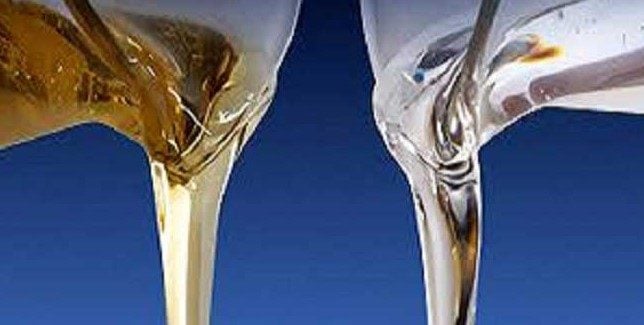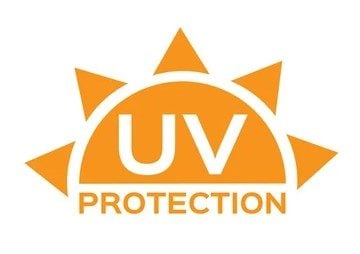Randy Charles is the owner of PaintCentric.com, a website dedicated to providing information, tips, tricks, and news about all things paint. With over 10 years...Read more
Choosing the right paint for painting projects is essential. Variety is available in types, finishes, and colors. Know the difference between indoor and outdoor paint when deciding. This section will discuss the differences and benefits of each.
Interior paint and exterior paint – what’s the difference? Which one is more beneficial? Let’s find out!

Different types of paints
When painting, knowing the right paint for your surface is essential. Here are the most common types:
- Oil-based paint. It’s durable and comes in many sheens. It’s mildew-resistant and ideal for humid areas.
- Latex paint. It stretches with the surface and has fewer fumes. It is easily washed off with soap and water.
- Primers. They seal the surface and create a long-lasting bond between two materials. It must be used before oil or latex paints.
- Alkyd enamel paints. They create a hard, adhesive layer, preventing peeling due to UV rays. Also, they are highly resistant to chemicals when applied outdoors.
Differences between interior and exterior paints
When picking paint for exterior surfaces around your home, the major factors are the type of surface and the conditions it is exposed to. Interior and exterior paints differ in composition. Interior paint, oil or water-based, often contains titanium dioxide. It is made with either acrylic or vinyl-acrylic, which provides good coverage on walls and ceilings. Exterior paints include more resin, which prevents fading from UV light. This also gives it better adhesion against weathering, dirt, and other elements.
Plus, most exterior paints have mildewcides that stop mildew growth. This is not suggested for interior surfaces because it’s hard to remove.
Interior paints come in different finishes:
- For high-traffic areas, such as hallways, eggshell, satin, or low luster.
- For trim, use semi-gloss.
- Flat/matte works for low-traffic areas like bedrooms and living rooms.
- Pearl/satin enamel is great for bathrooms.
- And semi-gloss enamel is best for kitchens since it’s easy to wipe away cooking messes.
Exterior finishes tend to be glossier than interior finishes. This makes them easier to clean since dirt stands out more. Other considerations are elastomeric coatings made for damp or humid climates. These expand/contract with changing temperatures, which can cause cracking without the stretchable coating.
Preparing the Surface

Are you thinking of using interior paint outside? Important to remember: for success, the surface must be prepared. Clean, smooth, and prime – these steps need to be taken. In this section, let’s discuss the preparations for a successful outcome.
Cleaning the surface
Check the condition of a surface before painting. Make sure it is properly cleaned. Wash off dirt and grime. Remove any loose material. Cleaning a surface is a multi-step process.
- Rent a pressure washer from a hardware store. Use it in light or medium settings. This will help remove debris.
- Use an acid wash on tough stains. Follow the manufacturer’s instructions. Wear gloves when using this solution. It can cause skin irritation.
- After using an acid solution, rinse any remaining residue using a hose. Allow time to dry before continuing painting prep work.
Applying a primer
Before starting your painting project, it’s essential to prep the surface by applying a suitable primer. This is vital as the primer will help lock in any existing stains and provide a smoother surface for the new paint. It also ensures even coverage. Primer should always be applied before painting and can last up to five years, depending on the product.
The type of primer you choose will depend on the material of your exterior surface and its condition. For instance, an oil-based paint may be needed for brick houses, while an alkyd or latex primer may be best for wood surfaces. Special primers exist for specific materials, such as cast iron and damp substrates. Also, some are formulated to resist corrosive atmospheres, like coastal areas where salt spray is common.
Be sure to choose a high-quality primer that will act as a protective barrier between your new paint and the substrate material. Read the technical data sheet of any product you plan to use to ensure it meets your needs before purchasing!
Applying the Paint
Painting outside is unlike painting inside. So, remember the distinctions when you paint your abode’s exterior. Ready the area before you start painting. This may include:
- Power washing
- Scraping
- Sanding
- Priming
Then, you can apply the paint.
Choosing the right paint
When it comes to painting outdoors, it’s important to choose the right paint. Interior latex acrylic enamel paint won’t last and can peel or fade. Exterior latex paint or wall coatings are designed for outdoor use and will last longer.
The type of material you’re painting on also affects the quality of the finish. For wood surfaces like decks and fences, use good quality acrylic or alkyd-based paints for protection against decay and rain. Metal surfaces should be primed with a rust-inhibiting primer before painting. Masonry surfaces need special masonry sealers to prevent moisture from getting in between the bricks or stones.
There are now hybrid paints claiming they can work for interior and exterior projects and prevent mildew on lumber surfaces. However, researching industry standards for your project area’s surface needs is still a good idea. Product datasheets from manufacturers can provide recommended uses and other care instructions.
Applying the paint

Before you apply the paint, prep the surface. Make sure the temperature is comfy. If painting in direct sunlight, use a rubberized base paint. It helps the coating stick in moist environments, like outside surfaces that get wet often.
Clean the surface with a hose or power washer. Use a scraper or wire brush for flaking or peeling areas. The sandpaper will remove rust, stains and any other debris. Allow time to dry before applying a primer coat. This helps the final color stay true and protects against moisture and fading from UV rays.
Wait until late morning – around 10 am – when it’s warm but not hot. Make sure no wind can blow away your paint job. Add 2-3 ounces of exterior grade mildewcide per gallon for outdoor interior paints. This gives more longevity to painted finishes in extreme weather conditions.
Remember these tips when using interior house paints outside:
- Plenty of primers
- Wait until later in the day for even application
- Mix mildewcide for added strength
- Paint away from windy areas
Finishing Up
Using interior paint outside has its pros and cons. You must consider the material you’re painting, its exposure to the elements and the temperature.
Here are the benefits and drawbacks of using interior paint outside and tips on how to finish up the job:
- Benefits of using interior paint outside
- Drawbacks of using interior paint outside
- Tips on how to finish up the job
Checking for any imperfections
Once you’re done painting, look for any faulty bits. Check for streaks, any uneven coverage, and bad brushstrokes. Most paints are easy to patch up without needing to repeat the whole thing. But if there’s a bigger area to fix, consider a new coat of paint.
Do your painting project step by step. Read product labels to get the most use out of the paint and avoid any problems with extreme temperatures. By taking care of the project and assessing the results, you can ensure it lasts for years.
Applying a sealer
When using exterior paint, the ultimate step is coating with a clear sealer. This gives further defense from water and makes the paint look new. Even exterior paints can use a good sealer.
Select a sealer that works with the type of paint. An acrylic coating is usually needed and can be applied with a brush or roller in one or two coats. Give each layer time to dry before applying the next. Some sealers may produce an odor. Read and obey product warnings before beginning.
The clear sealer guarantees better results and protection when done correctly and dry. Professional painters often suggest this step – making it worth it!
Maintenance

Interior paint can be used outside, but it won’t give you the same advantages as exterior paint. Exterior paint is way better at withstanding the weather and other elements. This makes it more durable. So, if you want to paint outside, use exterior paint!
Let’s explore the maintenance process and the perks of using exterior paint outdoors:
Regular inspection
For your paint to last, regular checks and maintenance are key. Inspect your exterior paint for fading, blistering, or peeling of color and sheen. If coverage or finish is an issue, look for other causes, such as dampness or pests.
Also, watch out for how sunlight affects your walls and windows. All light sources, like the afternoon sun, can change color and sheen. Check for water discoloration or alkali marks near sprinklers or plants.
Contact their customer service team if a brand’s product performance is low. They may offer a repair solution such as a new paint job or different materials – for instance, for water seepage under stucco exteriors.
Touching up the paint as needed
Touch-ups need the same paint as originally used. Exterior and interior paints are distinct – exterior paints have polymers for superior adhesion and protection from elements. Interior paints don’t. For best results, use matching paint.
Check expiration dates on older cans of paint. Oil-based paints are replaced with latex – some brands may still produce oil-based exterior colors. Confirm the undercoat or primer isn’t expired. This helps with adhesion and prevents bubbling or cracking.
Frequently Asked Questions
Can I use interior paint outside?
No, interior paint is not designed to withstand the elements, such as wind, rain, snow, and sun, and will not hold up well to outdoor use.
What kind of paint should I use for outdoor surfaces?
For outdoor surfaces, you should use exterior paint, specially formulated to withstand the elements and come in various finishes.
Is exterior paint more expensive than interior paint?
Generally, exterior paint is more expensive than interior paint, as it is formulated differently and is more durable.

Randy Charles is the owner of PaintCentric.com, a website dedicated to providing information, tips, tricks, and news about all things paint. With over 10 years of experience in the painting industry, Randy has become an expert in the field and is passionate about helping others learn more about painting. He has written numerous articles on the subject and is committed to providing accurate and up-to-date information to his readers.
